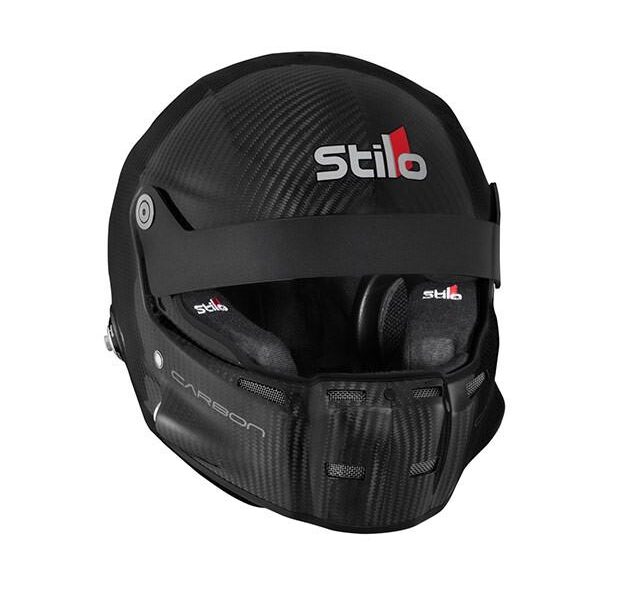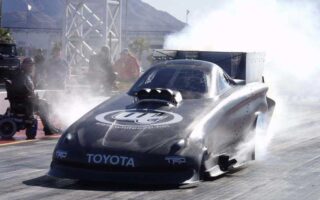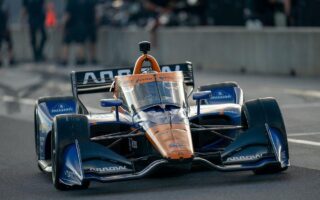As the tires screech and adrenaline surges, the thrill of a track day is an experience like no other. For car enthusiasts, the racetrack is a sanctuary where speed meets precision, and each corner is a dance with the asphalt. But amidst the roar of engines and the excitement in the air, safety remains paramount. While most drivers know the importance of protective gear in motorsport, one accessory often overlooked is the car helmet. Unlike its motorcycle counterpart, a car helmet serves a unique purpose tailored to the specific dynamics of closed-course racing. This article explores the crucial role that helmets play for drivers on track days, delving into their design, functionality, and the essential features that can enhance both safety and performance. Whether you’re a seasoned racer or a first-time participant, understanding the value of a car helmet can elevate your track day experience to new heights.
Table of Contents
- Choosing the Right Features for Track Day Helmets
- Understanding Safety Ratings and Certifications
- Top Brands and Models for Performance and Comfort
- Maintenance Tips for Longevity and Safety of Your Helmet
- Q&A
- Future Outlook
Choosing the Right Features for Track Day Helmets
When selecting a helmet for track day, prioritizing safety features is paramount. A full-face design is generally recommended, as it provides optimal protection by covering the entire head and face, shielding against any potential impacts. Look for helmets that meet established safety certifications, such as Snell or DOT, which indicate rigorous testing for impact and penetration resistance. Additionally, consider the weight of the helmet; lighter options enhance comfort during long sessions on the track, reducing fatigue while maximizing focus on performance.
Beyond safety, comfort and fit are essential for effective use during high-speed driving. A helmet equipped with adequate ventilation helps maintain airflow, ensuring that you stay cool even in intense conditions. You may also want to explore helmets with removable liners for easy cleaning and to accommodate various head shapes. Don’t underestimate the importance of communication systems, which can enhance your ability to receive instructions and maintain contact with your team during track sessions. Evaluating your specific needs and preferences will significantly influence your overall driving experience.
Understanding Safety Ratings and Certifications
When choosing a car helmet for track day, is essential for ensuring maximum protection. Helmets undergo rigorous testing and must meet specific standards set by organizations such as Snell and DOT. These certifications indicate that a helmet has been tested against a series of impact and penetration tests under varying conditions. Each rating is tailored for different motorsport disciplines, so it’s crucial to select a helmet that aligns with the specific demands of track racing. Familiarize yourself with these ratings:
- Snell SA – Designed specifically for automotive sports.
- Snell M – Meant for motorcycling but can also be used in some motor racing contexts.
- DOT – A general certification ensuring the helmet meets basic safety standards.
In addition to safety ratings, the construction and design of the helmet play an equally significant role. High-quality helmets are typically made from advanced materials such as carbon fiber or composite composites, which offer superior strength while remaining lightweight. Always check for features like fire-resistant liners and removable padding for comfort and hygiene. Here is a brief comparison of popular helmet brands to assist you in your choice:
| Brand | Safety Rating | Weight (g) |
|---|---|---|
| Bell | Snell SA2015 | 1400 |
| Stilo | Snell SA2020 | 1350 |
| Arai | Snell SA2015 | 1550 |
Top Brands and Models for Performance and Comfort
When it comes to track days, having a helmet that balances performance and comfort is essential for both safety and enjoyment. Leading brands in this arena have set a high standard with innovative designs that enhance aerodynamics while providing maximum protection. Among the standout names, Bell, Shark, and Arai offer models specifically engineered for high-speed racing conditions. Each of these brands showcases a range of features, such as lightweight materials, superior ventilation systems, and padded interiors that conform to the wearer’s head for added comfort.
In terms of specific models, the Bell Star DLX and Shark Race R Pro have garnered acclaim for their exceptional fit and state-of-the-art safety technologies. The Arai Corsair X is another top choice, known for its unparalleled comfort level and customizable fit. Below is a comparison table highlighting key features of these top models:
| Model | Weight | Ventilation | Safety Rating |
|---|---|---|---|
| Bell Star DLX | 3.5 lbs | Advanced airflow system | Snell SA2015 |
| Shark Race R Pro | 3.3 lbs | Optimal air intake | DOT/ECE |
| Arai Corsair X | 3.7 lbs | Multi-directional airflow | Snell SA2020 |
Ultimately, the choice of helmet should align with your personal preferences, track conditions, and riding style. Given the variety of options available, it’s crucial to try on different models to find the one that fits comfortably while offering the level of protection you demand on the track. Prioritize brands that combine industry-leading technology with a commitment to rider safety for the best experience during your track day.
Maintenance Tips for Longevity and Safety of Your Helmet
To ensure your helmet remains in top-notch condition for those exhilarating track days, regular maintenance is essential. Begin by regularly inspecting your helmet for any signs of damage, such as cracks or dents, which could compromise its protective capabilities. Additionally, the interior padding can degrade over time; consider removing it and washing it with mild soap and water to keep it fresh. Remember to let the padding air dry completely before reinserting it into the helmet.
Another crucial aspect of helmet care is proper storage. Avoid leaving your helmet in direct sunlight or in extreme temperatures, as this can weaken the materials. When not in use, store your helmet in a protective bag or case to shield it from dust and scratches. Furthermore, make it a habit to check the visor; a clear view is vital for safety. Replace any scratched or damaged visors to maintain optimal visibility during your track day adventures. For reference, here’s a quick checklist of helmet maintenance:
| Maintenance Task | Frequency |
|---|---|
| Inspect for damage | Before each use |
| Wash interior padding | Monthly |
| Check visor condition | Before each use |
| Store in a case | Always |
Q&A
Q&A: Understanding the Need for a Car Helmet on Track Days
Q1: Why do I need a car helmet for a track day?
A: When hitting the track, safety is paramount. A car helmet is designed to protect your head from impacts during accidents. Unlike regular helmets, those meant for motorsports are crafted to withstand higher forces and provide enhanced protection in high-speed situations.
Q2: What features should I look for in a track day helmet?
A: Look for helmets that meet specific safety standards, such as Snell or FIA certifications. Key features to consider include a snug fit, lightweight materials, and good ventilation to keep you cool during high-intensity laps. Additionally, a helmet with a visor or eye protection is crucial to shield against debris.
Q3: Can I use a motorcycle helmet instead of a car helmet?
A: While motorcycle helmets offer significant protection, they are not specifically designed for the unique demands of car racing. Car helmets often come with a wider field of vision and compatibility for Hans devices, which are crucial for head and neck protection in a car. It’s best to invest in a helmet specifically made for track use.
Q4: How do I ensure a proper fit for my helmet?
A: Find a professional to help you with fitting, or follow the manufacturer’s sizing guide. When trying on a helmet, ensure it feels snug—there should be no movement when you shake your head. The chin strap should fit securely while still allowing you to breathe comfortably.
Q5: Are there any other safety gear requirements for track days?
A: Yes, in addition to a helmet, many tracks require other safety gear like a fire-resistant driving suit, gloves, and shoes. Always check with your specific track to confirm what safety equipment is necessary, as requirements can vary.
Q6: Can I wear my helmet during everyday driving?
A: While technically possible, it’s not practical or legal to wear a racing helmet while driving on public roads. Track helmets are not designed for ordinary driving conditions, and their bulk can obstruct your view. It’s best to reserve your helmet for track days.
Q7: How often should I replace my car helmet?
A: Helmets should be replaced every 5 to 10 years, depending on the manufacturer’s recommendation and any signs of wear or damage. If you ever experience a crash while wearing your helmet, it’s important to replace it immediately, even if there are no visible signs of damage.
Q8: Where can I buy a quality track day helmet?
A: Quality track day helmets can often be found at motorsport specialty stores, online retailers, and even some general sporting goods stores. Look for reputable brands known for their safety standards and customer service, and be sure to try them on before making a purchase.
Q9: How much should I expect to spend on a car helmet?
A: Prices for car helmets can vary widely, typically ranging from $200 to over $1,000. While it’s tempting to opt for the cheapest option, investing in a higher-quality helmet will provide better safety and durability for your track day adventures.
Q10: What else should I keep in mind when preparing for my track day?
A: Beyond your helmet, familiarize yourself with the track’s rules and regulations, warm up properly before driving, and ensure your vehicle is in top condition. Stay hydrated and be mentally prepared—track days can be exhilarating but also require focus and caution. Enjoy the ride!
Future Outlook
investing in a car helmet for your track day experience is not just about following the rules—it’s about ensuring your safety while you embrace the thrill of high-speed racing. With a variety of options ranging from lightweight designs to those featuring advanced technologies, you have the opportunity to find a helmet that not only meets safety standards but also complements your personal style. Remember, the track beckons with excitement, but it’s the protective gear that allows you to answer that call with confidence. So, as you gear up for your next adventure, let your helmet be a symbol of your commitment—to safety, to performance, and to the pure joy of driving. Drive fast, stay safe, and may your track days be filled with unforgettable memories.



